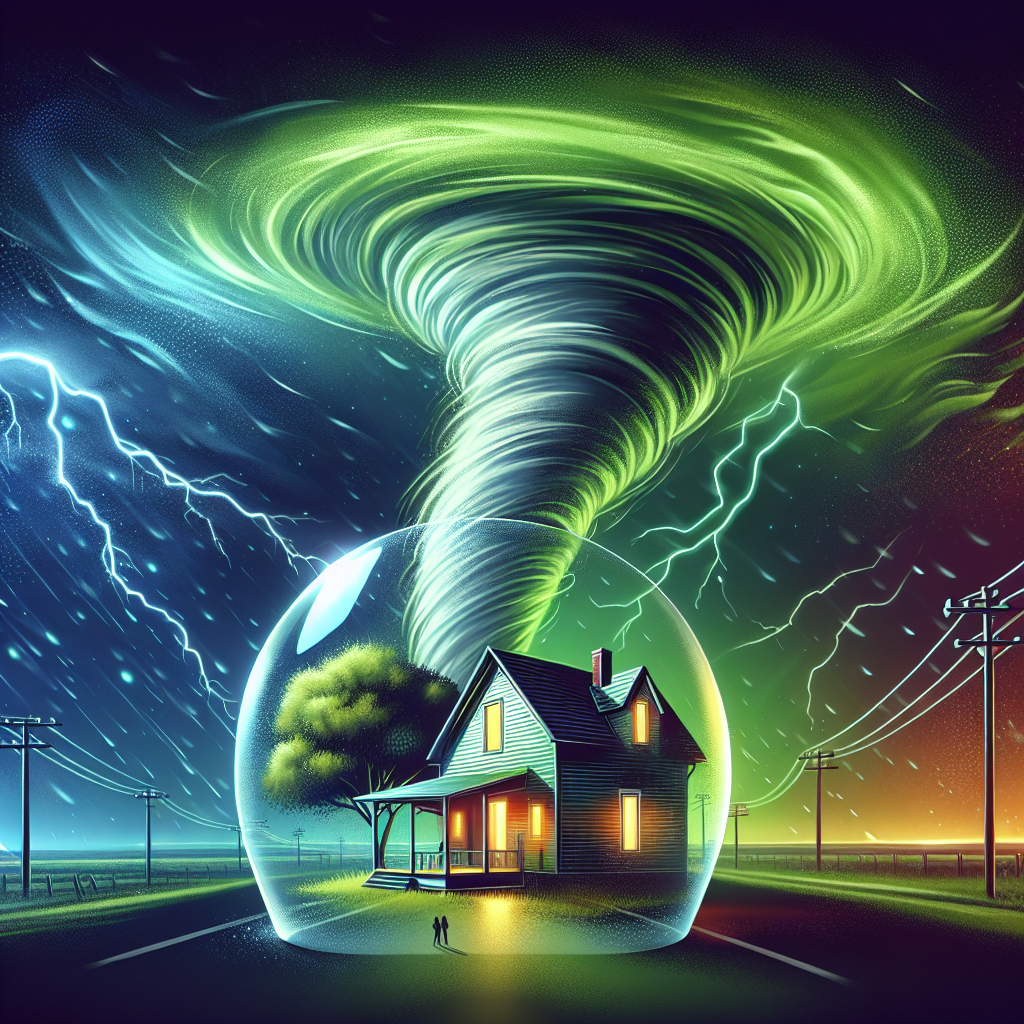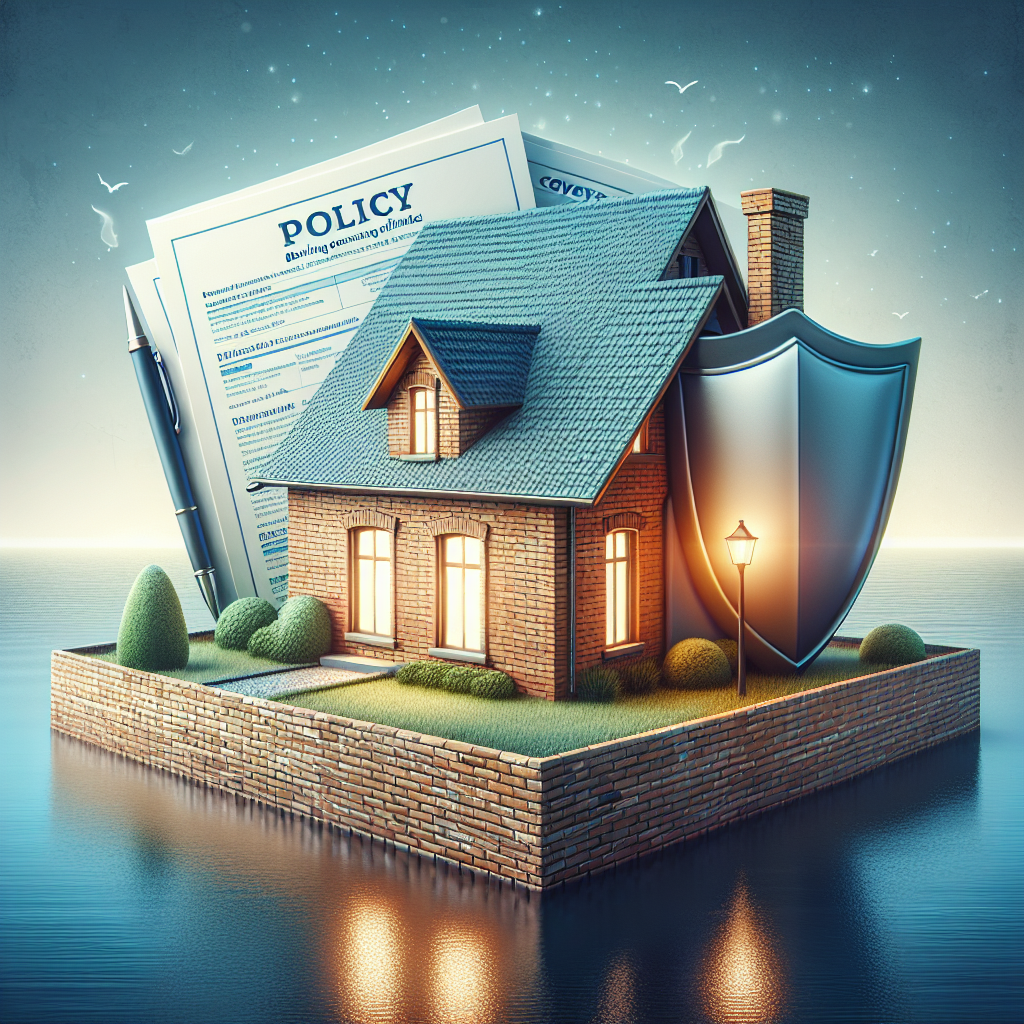Filed under Home Insurance on
Tornado Coverage Home Insurance: What It Includes

When the forecast shifts from sunny skies to swirling funnels, homeowners wonder what happens next. If the worst occurs, will your policy truly protect you? This guide unpacks tornado coverage home insurance in plain language so you know exactly what is included, what might be excluded, and the nuances that can make or break a claim. You will learn how tornado losses are treated under common policy forms, how deductibles really apply, and which enhancements deliver peace of mind without overspending.
How Home Insurance Treats Tornadoes
Most standard homeowners policies (such as HO-3 and HO-5) treat tornadoes as windstorms. That means the destructive force of rotating winds is typically covered, subject to policy limits and exclusions. In these policies, the dwelling (your house), other structures (fences, sheds), and personal property are generally protected from wind-driven damage caused by a tornado.
There’s a crucial distinction: HO-3 policies insure your dwelling on an “open perils” basis (covering all causes of loss unless excluded) but cover personal property on a “named perils” basis. Windstorm is a named peril, so losses to belongings caused by a tornado are typically included, provided no exclusion applies. HO-5 policies offer broader protection by insuring both the dwelling and personal property on an open-perils basis, which can simplify claims.
In short, tornado coverage home insurance is not a special, add-on policy in most states. It is a core part of a standard homeowners policy’s windstorm protection. However, certain states and insurers may use separate wind/hail deductibles or add endorsements that modify how roofs and older structures are settled—details that matter when a major storm hits.
What Tornado Coverage Usually Includes
While every policy is different, tornado coverage home insurance broadly includes several key protections.
Dwelling (Coverage A)
This covers your home’s structure—roof, walls, foundation, and attached features like a garage—against wind damage from a tornado. If a funnel cloud rips shingles away or a tree crashes through your roof, the dwelling coverage pays for repairs or rebuilding up to the policy limit, minus the deductible.
Other Structures (Coverage B)
Detached garages, sheds, fences, and gazebos are usually covered at a percentage of the dwelling limit, commonly 10%. If a tornado knocks down your fence or damages a detached workshop, you can file a claim under this coverage.
Personal Property (Coverage C)
Furniture, electronics, clothing, and most household items damaged by wind and resulting debris are typically covered. Valuables like jewelry and fine art may have sublimits, so consider scheduling high-value items separately. Keep in mind: if rain enters through a tornado-created opening (e.g., a broken window or torn roof), water damage is usually covered. If water enters without storm-created damage (like seepage), it may not be.
Loss of Use (Additional Living Expense)
If your home is uninhabitable after a tornado, this coverage helps pay for temporary housing, meals, and incremental living costs while repairs are underway. It can be a financial lifeline if your neighborhood faces longer restoration timelines after a multi-block event.
Debris Removal and Tree Removal
Most policies include debris removal coverage. If the storm litters your lot with splintered lumber or hurls branches across the yard, the cost of hauling it away is often covered up to a sublimit. Tree removal typically has its own smaller sublimits per tree and in aggregate, particularly when the tree falls without damaging a covered structure.
Liability and Medical Payments
Liability does not cover damage from the tornado itself, but it may apply if you are legally responsible for someone’s injury on your property after the storm (for example, a visitor trips on unsecured debris). This is situational and depends on negligence. In general, your neighbor’s property is covered by your neighbor’s policy, not yours, absent negligence.
What Tornado Coverage Usually Excludes
Understanding exclusions helps you close coverage gaps before a storm ever forms.
- Flood and storm surge: Standard home policies exclude flood. If wind-driven rain leads to surface water accumulation that enters your home, you need separate flood insurance for that portion of damage.
- Earth movement: Even if a tornado precedes it, earth movement is generally excluded unless you have specific coverage.
- Power outage off premises: Spoiled food from a grid outage may not be covered unless your policy or endorsement includes it.
- Mold and rot: Often limited or excluded unless it is a direct, sudden, and accidental result of a covered peril and discovered promptly.
- Neglect and wear: Pre-existing damage, poor maintenance, and gradual deterioration are not covered.
- Anti-concurrent causation clauses: If an excluded peril and a covered peril combine to cause a loss, the entire loss may be excluded. Read this clause carefully.
Deductibles That Affect Tornado Claims
Deductibles matter because they determine how much of the loss you must absorb before insurance pays. Tornado coverage home insurance often uses one of two structures:
- Standard fixed deductible: A flat amount, such as $1,000 or $2,500, applied to most covered losses.
- Wind/hail deductible: In hail- and wind-prone states (e.g., Texas, Oklahoma, Colorado), insurers sometimes apply a separate deductible for wind or hail—either fixed or a percentage of your dwelling limit (e.g., 1–5%). Percentage deductibles can mean thousands of dollars out of pocket after a tornado.
Unlike hurricane deductibles that trigger based on named storm declarations in certain coastal states, tornadoes are typically handled under the standard or wind/hail deductible. Confirm the exact trigger and type on your declarations page.
Replacement Cost vs. Actual Cash Value—Especially for Roofs
How your roof is settled may be the single biggest driver of your out-of-pocket cost.
- Replacement Cost Value (RCV): Pays the cost to replace damaged materials with new, similar materials. You may receive an initial payment of the actual cash value and the remainder after completing repairs.
- Actual Cash Value (ACV): Pays the depreciated value of your roof and materials, which can be significantly less for older roofs.
In wind-prone states, some insurers use roof surfacing endorsements that settle certain roof types (e.g., older asphalt shingles) at ACV for wind/hail losses. If your policy includes this, a tornado could leave you with a larger gap than expected. Ask your agent to confirm how tornado coverage home insurance applies to your specific roof and whether you can upgrade to RCV.
Special Situations: Condos, Renters, Landlords, and Manufactured Homes
Condo Owners (HO-6)
Your condo policy typically covers interior finishes (walls-in), personal property, and loss of use. The association’s master policy covers the building shell and common areas. Tornado damage to windows, interior walls, or flooring may fall under your HO-6, but master-policy deductibles can be shared among unit owners. Check for “loss assessment” coverage and adequate limits.
Renters (HO-4)
Renters do not insure the building, but their personal property and loss of use are typically covered for windstorm. A tornado that destroys your apartment complex would leave the landlord’s policy to rebuild the structure, while your HO-4 handles belongings and temporary housing.
Landlords (DP Policies)
Dwelling policies for rental homes generally cover the structure for windstorm damage and can include loss of rent if the property becomes uninhabitable due to a covered loss. Personal property coverage is limited to items the landlord owns and keeps on site, like appliances.
Manufactured and Mobile Homes
These homes can be more vulnerable to high winds. Specialized policies are available; anchoring systems may be required for coverage, and some policies feature higher wind deductibles. Confirm windstorm inclusion and consider reinforcement upgrades to reduce losses.
The Risk Landscape: Data, Trends, and Why It Matters
The United States averages roughly 1,200 tornadoes per year, according to the National Oceanic and Atmospheric Administration. Severe convective storms—which include tornadoes, hail, and straight-line winds—have produced record insured losses in recent years. Industry analyses shared by the Insurance Information Institute highlight that insured losses from these storms exceeded $60 billion in 2023, with elevated activity continuing into 2024. Researchers have also observed a shift in tornado frequency and impacts beyond the traditional “Tornado Alley” into parts of the Southeast and Midwest, extending the geographic footprint of risk.
Why does this matter for homeowners? Insurers respond to persistent losses by adjusting underwriting and pricing. We are seeing more wind/hail deductibles, roof age surcharges, material-specific settlement rules, and targeted mitigation incentives. Understanding these trends helps you tailor tornado coverage home insurance to your risk profile before the next season ramps up.
Endorsements and Upgrades That Strengthen Tornado Protection
A few policy enhancements can meaningfully improve resilience and claim outcomes:
- Extended or guaranteed replacement cost: Provides extra funds if rebuilding costs exceed your dwelling limit due to demand surge after a catastrophic event.
- Ordinance or law coverage: Pays for required code upgrades during repairs (e.g., stronger roofing underlayment, improved nailing patterns).
- Scheduled personal property: Increases limits and broadens causes of loss for high-value items like jewelry or collectibles.
- Equipment breakdown: Covers sudden mechanical or electrical failures of home systems; while not tornado-specific, it complements your overall protection.
- Water backup and sump overflow: Wind-driven rain may be covered, but backups are typically excluded without this endorsement.
- Additional debris removal limits: Helpful in heavily wooded lots where hauling costs can spike after a storm.
Risk Mitigation: What You Can Do Now
Insurers increasingly reward proactive risk reduction, and certain improvements can materially reduce tornado losses:
- Roof resilience: Install Class 4 impact-resistant shingles, sealed roof decks, and enhanced underlayment. Many carriers offer credits for these upgrades.
- Continuous load path: Strengthen connections from roof to walls to foundation using clips, straps, and anchors to resist uplift.
- Garage doors: Upgrade to wind-rated doors; garages are frequent failure points in high winds.
- Anchoring and tie-downs: Critical for manufactured homes and outbuildings.
- Safe room: A FEMA-compliant safe room offers lifesaving protection and may add value to your property.
- Tree management: Remove weak or overhanging limbs and maintain healthy spacing from structures.
- Home inventory: Keep an updated digital inventory with photos and serial numbers to streamline claims.
Cost Drivers and Ways to Save Without Sacrificing Coverage
Premiums reflect location, construction type, roof age and material, claims history, and local loss trends. To optimize affordability and protection:
- Right-size your deductibles: A higher wind/hail deductible can lower premiums but increases out-of-pocket costs. Choose a level you can comfortably afford.
- Ask about mitigation credits: Carriers may discount for impact-resistant roofs, fortified standards, and monitored alarms.
- Bundle smartly: Combining home and auto can yield significant savings. Compare the bundled rate to standalone pricing.
- Keep coverage current: Reassess dwelling limits annually to reflect rising material and labor costs. Underinsurance is costly after a total loss.
- Review roof settlement: Upgrading from ACV to RCV where available can avoid large gaps after wind damage.
How to File a Tornado Claim the Right Way
Clear steps and thorough documentation help speed up resolution and maximize recovery under tornado coverage home insurance.
Before the Storm
- Back up records: Store an inventory, photos of key rooms, and insurance documents in the cloud.
- Identify contractors: Pre-vet licensed roofers and general contractors to avoid post-storm scams.
- Know your policy: Confirm your deductible, roof settlement basis, and any wind/hail special terms.
Right After the Storm
- Stay safe: Avoid downed lines and unstable structures. Document damage only when it’s safe.
- Mitigate further loss: Tarp the roof, board windows, and shut off utilities if needed. Keep receipts—these are typically reimbursable.
- Notify your insurer: File the claim promptly and provide initial photos and notes.
- Meet the adjuster: Walk the property together. Point out roof, siding, fence, and interior water intrusion.
- Get reputable estimates: Use licensed contractors experienced in storm restoration. Compare scope, not just price.
Documentation Tips
- Photograph from multiple angles and include wide and close shots.
- List damaged personal property with age, model, and approximate cost.
- Track all extra living expenses with receipts and a simple log.
- Save communication records with your adjuster and contractors.
Common Pitfalls—and How to Avoid Them
- Underestimating rebuilding costs: Material and labor spikes post-disaster can exceed limits. Consider extended replacement cost and ordinance or law coverage.
- Assuming all water damage is covered: Coverage usually requires wind-created openings. Flood needs separate coverage.
- Ignoring roof depreciation terms: An ACV roof endorsement can leave a major gap. Clarify your settlement basis before storm season.
- Accepting the first estimate blindly: Get a second opinion if scope seems incomplete. Consider an independent adjuster for complex losses.
- Falling for scammers: Beware of unsolicited “storm chasers.” Never sign over your insurance benefits without legal advice.
Regional Nuances and Availability
In higher-risk counties, some carriers restrict new business, apply percentage wind/hail deductibles, or use roof age thresholds to limit exposure. If you struggle to find a policy, check your state’s residual market or FAIR Plan. These last-resort options can restore basic wind coverage, though you may need a separate policy for liability or comprehensive features. Always compare coverage forms, not just price—the cheapest policy can be the costliest after a tornado.
Checklist: Build a Tornado-Ready Policy
- Confirm windstorm is covered and identify your wind/hail deductible.
- Verify dwelling limit with a replacement cost estimator; consider extended replacement cost.
- Upgrade to RCV on roofs if available; review any roof surfacing or schedule endorsements.
- Add ordinance or law coverage to fund code-mandated upgrades.
- Increase debris and tree removal limits if heavily treed.
- Schedule high-value items to avoid sublimits.
- Consider water backup coverage.
- Ask about credits for impact-resistant roofs or fortified construction.
- Maintain a digital home inventory and safe storage for documents.
Realistic Expectations for Claim Payouts
Even with strong tornado coverage home insurance, payouts reflect contract terms. Depreciation, sublimits, and local building codes all affect the final check. Expect at least two payments when you have RCV: an initial ACV payment and a recoverable depreciation payment upon proof of completed repairs. If building materials are scarce after a regional disaster, timelines may stretch; keep your adjuster updated and request extensions on proof-of-loss deadlines if needed.
Expert Insights and Industry Perspective
Claims professionals consistently underscore three points: documentation wins claims, mitigation prevents losses, and clear communication reduces friction. From an underwriting standpoint, roof condition and materials remain the top predictors of wind-related severity. Industry research and insurer filings indicate that impact-resistant roofing and continuous load paths can materially reduce claims severity, which is why some carriers offer meaningful discounts for these upgrades. Aligning your home improvements with those incentives is a smart long-term strategy.
Frequently Asked Questions
Are tornadoes covered under standard homeowners insurance?
Yes, tornadoes are generally covered as windstorms under standard homeowners policies, subject to deductibles and exclusions. Confirm any wind/hail-specific deductible that may apply in your state.
Do I need a separate policy for tornadoes?
Usually no. Tornado coverage home insurance is typically included in standard homeowners policies. However, separate flood insurance is needed for flood-related damage.
What if the tornado causes a power outage and I lose food?
Coverage for spoiled food due to off-premises power failure varies. Some policies include a small limit; others require an endorsement. Check your policy specifics.
Is water damage from rain during a tornado covered?
If wind creates an opening that lets rain in, resulting interior damage is typically covered. Ground flooding remains excluded without flood insurance.
How can I lower my premium without losing critical protection?
Consider higher deductibles you can afford, ask for mitigation credits, bundle policies, and verify that key protections (RCV roof, ordinance or law coverage) stay intact.
Will my rates go up after a tornado claim?
It depends on your insurer and state regulations. Weather-related claims can influence renewal pricing, especially if a region experiences repeated severe storms. Shopping the market at renewal can help.
Bringing It All Together
For most households, tornado protection is already embedded in a standard homeowners policy—yet the details determine outcomes. The right limits, deductibles, and endorsements can mean the difference between a swift rebuild and a budget-busting shortfall. By reviewing your declarations page, aligning your coverage with realistic rebuilding costs, and investing in practical mitigation, you turn tornado coverage home insurance into a reliable financial safety net rather than a hopeful promise.
Start with a quick audit today: confirm your wind/hail deductible, roof settlement basis, and ordinance or law limit. If anything seems unclear, ask your agent to walk you through a scenario based on your home’s age, roof type, and local code requirements. A few targeted adjustments now can deliver outsized peace of mind when the sirens sound—and make your claim experience faster, smoother, and more complete.
When the winds die down, you want to focus on recovery, not fine print. With a thoughtful approach to tornado coverage home insurance, you can do exactly that.





